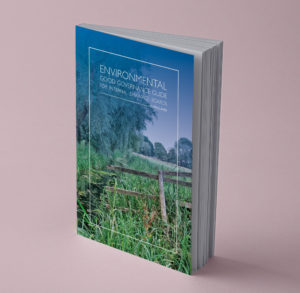ADA publishes comprehensive Environmental Good Governance Guide for IDBs

 The long-anticipated publication of the Environmental Good Governance Guide for Internal Drainage Boards is the culmination of a two-year Defra funded project, managed and delivered by ADA.
The long-anticipated publication of the Environmental Good Governance Guide for Internal Drainage Boards is the culmination of a two-year Defra funded project, managed and delivered by ADA.
It brings together a vast, complex and ever-changing array of environmental legislation, regulation and policy, in a format that is accessible and relevant to IDBs, to help them to comply with their statutory environmental duties, identify best practice approaches, and to exceed expectations in their management of our lowland freshwater environments.
This balance can be hard to comprehend and achieve. It is not always easy to benchmark what “good” looks like across such a broad spectrum of overlapping environmental priorities. Most organisations understand why they are being asked to take environmentally supportive approaches, and what those approaches might be. For example: reducing carbon emissions and making room for nature. The difficulty is most often in understanding how to go about it.
The Environmental Good Governance Guide for IDBs aims to bridge this knowledge gap. For each environmental topic presented, it provides interpretation of common, but sometimes vague legislative phrases like “have regard for” and “consider”. The Guide then sets out what this means an IDB must do, in practical terms, to help to evidence that it has done what is being asked of them.
The Guide then highlights any associated best practice approaches, where they exist, to define what an IDB should do to achieve full and transparent compliance with their environmental duties. For IDBs who are already following best practice, the guide sets out what more they could do to maximise their contribution to supporting and enhancing the environment. To close each subject area, a list of key resources is provided to enable readers to find more detailed information should they require it. This sequential presentation of guidance ensures that there is something relevant in the Guide for all levels of confidence and capability.
The Guide is not designed to be read cover-to-cover: it would probably fail in delivering its aims if it were. It is designed to be a reference guide, allowing readers to quickly navigate to the topic they seek. The Duty Index at the start of the Guide provides users with a quick-reference list of all environmental duties which require IDB compliance, as well as an efficient means of navigating to the details of each duty. Chapters cover a wide range of topics from waste management to protected habitats and species, water resource management, climate change and publishing environmental information.
The Toolbox section of the Guide details the key processes, tools and documents an IDB can use to help to develop and demonstrate their environmental competence across the full spectrum of environmental subject areas. The recommended approaches are scalable so they can be implemented by larger IDBs and consortia as well as smaller individual IDBs. The information presented will be relevant to all those with an interest in IDB activities, including board members, officers, site staff, contractors and external stakeholders.
To compliment the publication of the Guide, ADA is planning to hold workshops in 2023 to provide an opportunity to promote and discuss the key messages and techniques detailed in the Guide. Articles in the ADA Gazette will also present bite-sized summaries of some of the lesser known areas of environmental governance the guide covers.
The Environmental Good Governance Guide for IDBs can be viewed and downloaded here. A limited number of paperback copies are being printed and will be available to ADA members from early October onwards. Our sincere thanks go to all those who have helped to bring this Guide together. We do hope you find the Guide a useful and interesting addition to the expanding suite of environmental advice and guidance provided by ADA.
View the Environmental Good Governance GuideArchive
- July 2024
- June 2024
- May 2024
- April 2024
- March 2024
- January 2024
- December 2023
- November 2023
- October 2023
- September 2023
- August 2023
- July 2023
- June 2023
- May 2023
- April 2023
- March 2023
- February 2023
- January 2023
- December 2022
- September 2022
- August 2022
- July 2022
- June 2022
- May 2022
- April 2022
- March 2022
- February 2022
- January 2022
- December 2021
- November 2021
- September 2021
- July 2021
- May 2021
- March 2021
- February 2021
- January 2021
- December 2020
- November 2020
- October 2020
- September 2020
- August 2020
- July 2020
- May 2020
- April 2020
- March 2020
- February 2020
- January 2020
- December 2019
- November 2019
- October 2019
- September 2019
- August 2019
- July 2019
- June 2019
- May 2019
- April 2019
- March 2019
- February 2019
- January 2019
- December 2018
- November 2018
- October 2018
- September 2018
- August 2018
- July 2018
- June 2018
- May 2018
- April 2018
- March 2018
- February 2018
- January 2018
- December 2017
- November 2017
- October 2017
- September 2017
- August 2017
- July 2017
- June 2017
- May 2017
- April 2017
- March 2017
- February 2017
- January 2017
- October 2016
- September 2016
- August 2016
- July 2016
- June 2016
- May 2016
- April 2016
- March 2016
- January 2016
